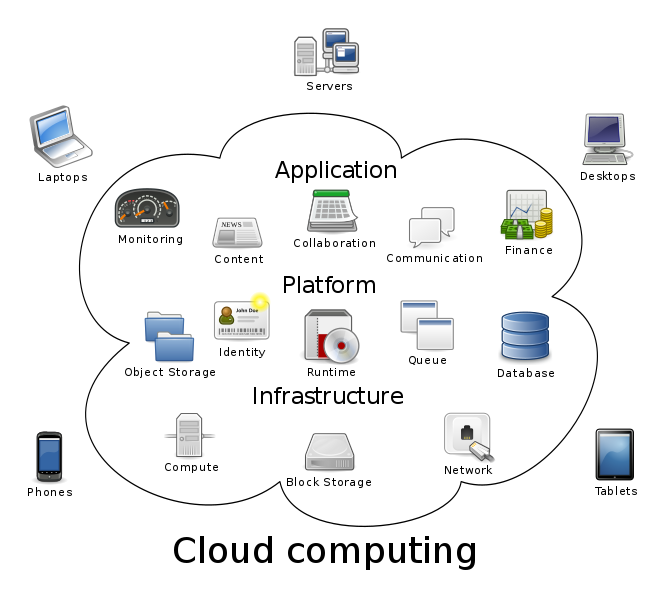Cloud computing is the new normal. Every time you are using a service or an application through an internet connection, you are using the cloud. Since most companies nowadays have part or all their databases hosted on the cloud, you ask how is the best way to do it. Migrating your database to the cloud can help you manage your workload by making your data available and easily scalable. Read on to learn about database cloud migration and tips to do it right.

Database Cloud Migration Overview
Cloud migration refers to the process of moving data, applications, and operations to a cloud computing environment. A cloud computing environment consists of services, data centers, and software that users can access over the internet. This is provided by a cloud service vendor.
Nowadays most organizations are benefiting from migrating part or all their databases and operations to the cloud due to its lower costs, its scalability and the data availability.
Companies usually have some concerns before moving their databases to the cloud.
Not every workload is fit for cloud deployment. On-premises applications can leverage high-performance fiber channel servers with more than 100,000 input/output operations per second (IOPS), public clouds not yet.
Another concern about moving databases to the cloud is the security of sensitive data on the cloud. Nevertheless, most vendors have strong security systems, using behavior analysis and threat intelligence to secure the cloud, including strong encryption algorithms such as Advanced Encryption Standard (AES).
Database Cloud Migration: Cloud Service and Deployment Models
When developing a cloud migration strategy, there are several considerations to have in mind before choosing a cloud provider. Moving data to the cloud requires to ensure that the applications dependent on that data suffer minimal disruption. Some of the steps for a successful cloud migration can include:
- Assessing your database—and systems requirements.
- Selecting the cloud environment—if moving to public, private or hybrid cloud.
- Determine the architecture—if going with software, platform or infrastructure service model.
- Select the provider—taking into account the services they can offer to manage effectively your database. For example, you should evaluate the respective backup solutions offered by each provider.
- Plan the migration—evaluate the planned workload and plan for migration in increments, perhaps starting with a rehosting strategy and building up to a refactor
- Execute—this is the actual move.
- Monitor—make sure that your migrated workload is functioning as intended.
Cloud platforms and services are built around three recognized service models, Software, Platform, and Infrastructure (SPI), according to the focus of their services:
- Software as a Service (SaaS)—a software distribution model where a cloud provider hosts applications on top of a platform and infrastructure and makes them available to users over a network. Examples of SaaS include Google Apps, Salesforce, Citrix GoToMeeting.
- Platform as a Service (PaaS)—provides an application development platform that offers management of services, networks, and other system components. Examples of PaaS include AWS Elastic Beanstalk, Microsoft Azure, Engine Yard, and Apprenda.
- Infrastructure as a Service (IaaS)—in this model the cloud provider host servers, storage, network components to create a pool of resources. The provider orchestrates these resources by a set of connectivity and delivery tools. Examples of IaaS include DigitalOcean, AWS and Microsoft Azure.

On the other hand, cloud deployment models (the cloud environment) describe how cloud technologies are implemented in the various service models:
Public Cloud
A cloud service provider owns and operates the cloud and makes it available to the public under a pay-as-you-go scheme.
Private Cloud
A third-party or a single organization owns and operates the cloud, that may operate on or off- premises.
Hybrid Cloud
A combination of different types of clouds, most commonly, private and public clouds but can include an on-premises infrastructure as well. It is useful for “cloud bursting”, where an application can run in a private cloud and burst into a public cloud to satisfy unexpected demands of capacity
After you have your cloud migration strategy in place, it’s time to choose a provider. Several companies are offering a variety of cloud services including, storage, database, process, application, integration, security, and testing. The four most popular choices are Amazon Web Services (AWS), Microsoft Azure, Oracle Cloud and Google Cloud Platform (GCP).
- Amazon Web Services (AWS)—is the most complete, offering over 140 different services. Their database services allow you to create scripts to help with orchestration, using Application Programming Interfaces (APIs).
- Microsoft Azure—has the backup of Microsoft services. Could be a good fit for environments built on a .Net ecosystem or that already work with Microsoft products.
- Google Cloud Platform (GCP)—since contributes heavily to open source, the users can integrate with open source technologies, such as Kubernetes for container management.
- Oracle Cloud—useful for users already running an Oracle or MySQL database.
Advantages of Cloud Migration
Companies are migrating their operations and databases to the cloud to leverage availability, scalability, and cost-effectiveness. Cloud computing increases efficiency and offers several advantages, such as the following:
- Cost-effective— moving to the cloud means you can avoid high infrastructure costs. Moreover, you can optimize operational costs by using the pay-as-you-go price scheme of your cloud provider.
- Scalability—the cloud allows companies with growing or fluctuating bandwidth demands to scale the database up or down to deal with it.
- Faster time to market—when you have your applications on the cloud, move them to market is done quickly, a difference with an offline process that can take days.
- Reliability—most cloud providers offer 99.9% of consistency, that means they keep downtime to a very minimum. That means the users can access the data when needed.
- Disaster recovery—cloud providers offer disaster and recovery solutions as part of their services, helping smaller companies that find it challenging to deploy an on-premises solution.
- Automatic software updates—vendors take care of regular software and security updates, meaning you don’t have to.
- Document control—moving to the cloud means there is more visibility since all files are stored centrally. This makes to collaborate and control the information easier, no more cumbersome email attachments.
- Security—keeping your data on the cloud helps you access it no matter what happens with the physical computers or laptops of your employees. Besides, having a cloud database allows you to leverage from the security solutions of your cloud provider, such as threat intelligence and behavioral analysis tools.
The Bottom Line
Moving your database to the cloud may seem a daunting task but with a little strategic planning and choosing the right provider for you can be much easier. The benefits of scalability, reliability, and availability clearly outweigh the challenges of migrating. Companies also can increase their competitiveness by accessing advanced technologies while keeping their operating costs low. That levels the field for small companies to innovate and disrupt the market.


